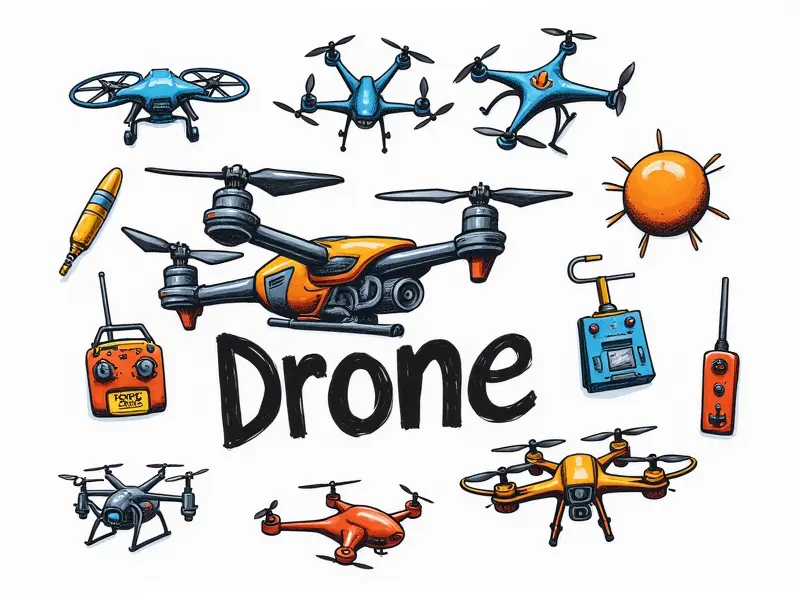iFlight drone wind resistance

Ultimate Guide to Flying iFlight in Wind
Flying a drone can be an exhilarating experience, but it becomes significantly more challenging when the wind is strong. For enthusiasts using iFlight drones, mastering wind resistance and stability is crucial for optimal performance. This guide provides comprehensive tips and techniques to help you navigate high winds with ease.
Mastering Wind with iFlight Drones
Wind can be unpredictable and challenging, but with the right strategies, your iFlight drone can handle even the strongest gusts. Understanding how wind affects flight dynamics is essential for maintaining control during windy conditions.
Boost Your iFlight Drone's Wind Resistance
- Upgrade Propellers: Consider using propellers designed specifically for high-wind environments to improve lift and stability.
- Battery Capacity: Increase your drone’s flight time by equipping it with a higher-capacity battery, which can provide more power during windy conditions.
Enhance Stability: iFlight Drone Wind Guide
Maintaining stability in high winds is critical for safe and effective operation. Here are some tips to enhance your drone’s stability:
- Tuned Motors: Ensure that all motors are properly tuned to maintain consistent power output.
- Balanced Weight Distribution: Balance the weight of your iFlight drone evenly across its frame for optimal performance in windy conditions.
Maximize Flight Time: iFlight Wind Tricks
Flying longer in high winds can be challenging, but there are several tricks to help you maximize flight time:
- Select Optimal Takeoff and Landing Points: Choose locations with minimal wind exposure for takeoffs and landings.
- Avoid Flying Against the Wind: Try to fly in a direction that minimizes headwinds, or use your drone’s capabilities to navigate against them efficiently.
iFlight Drone Adjustments for High Winds
Making specific adjustments can significantly improve your iFlight drone's performance during windy conditions. Here are some essential tweaks:
- Adjust PIDs: Fine-tune the Proportional, Integral, and Derivative settings to better control your drone in high winds.
- Calibrate Gyroscopes: Ensure that all gyroscopes are calibrated for accurate readings and responsive performance.
Tips to Navigate Wind with iFlight Drones
Navigating wind effectively is key to a successful flight. Here are some practical tips:
- Monitor Weather Conditions: Always check the weather forecast before flying and avoid flying during severe wind conditions.
- Practice Flying Techniques: Regularly practice your flying skills in various wind conditions to become more proficient at handling your drone.
Optimize iFlight Drone Settings for Windy Conditions
Tuning your drone’s settings is crucial for optimal performance in windy environments. Here are some key settings to adjust:
- Wind Compensation: Enable wind compensation features if available, which can help stabilize the drone during gusts.
- Motor Power Levels: Adjust motor power levels for better control and stability in windy conditions.
Keep Control of iFlight Drones in High Winds
Losing control is a common issue when flying drones in high winds. Here are some strategies to maintain control:
- Use GPS Lock: Enable GPS lock to keep your drone steady and prevent it from drifting away.
- Manual Control Mode: Switch to manual mode for more precise control when flying in challenging wind conditions.
Secrets for Flying Your iFlight Drone in High Winds
Flying in high winds requires a combination of skill and strategy. Here are some insider tips:
- Understand Wind Patterns: Learn to read wind patterns and anticipate gusts for better navigation.
- Lightweight Build: Optimize your drone’s build by using lightweight materials where possible, reducing the impact of strong winds.
Enhancing Stability in Wind with iFlight
Stability is crucial when flying drones in high wind conditions. Here are some methods to enhance stability:
- Use Dampening Systems: Incorporate dampening systems like vibration absorbers to reduce the impact of wind on your drone.
- Balanced Propeller Setup: Ensure that all propellers are balanced and functioning correctly for smooth, stable flight.
Conclusion
Flying an iFlight drone in windy conditions requires a combination of proper equipment, strategic planning, and skillful operation. By following the tips outlined in this guide, you can enhance your drone’s performance, maintain control, and enjoy flying even during challenging weather conditions.

